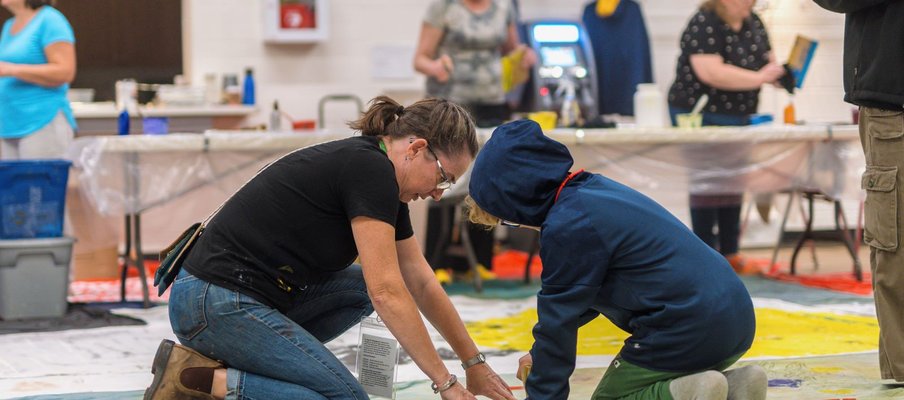
Youth empowered to express themselves authentically
Art can be a powerful tool to incorporate young voices into community-wide conversations.
For over 28 years, Monique Martin’s creative installations have shown that art is more than just a medium of expression. Her work has the ability to unlock her student’s creative potential, giving them the confidence to share that creativity with their community.
“If you engage students in the community, they will respect that community more than before, because they feel a part of it,” she says. “The art they do that goes on their fridge, is one level, but engaging kids in the arts that go into their community is different, and both levels are important.”
Martin, born in Saskatoon, is a renowned installation artist and printmaker whose work has appeared worldwide. Her innovative installations and immersive art projects empower young people to engage with complex global issues.
She says that when students understand the stories behind the art, “those moments are super special, and they will remember them. We must give them the confidence that they are doing something valuable.”
She believes arts education with young artists should not be confined to the studio. These opportunities should extend into communities, sparking dialogues and encouraging collaboration.
“I engage my students in global concepts, such as, the environment and human interaction,” she says. “I want them to engage in larger ideas. It's easy to make little installations and stick them up, but to make the students think about it later and engage the community in their thoughts is a little bit harder. That is what I aim for.”
Martin’s art installations have been a part of Nuit Blanche for several years. The arts festival takes place in Saskatoon every September during Culture Days. In 2021, during the pandemic, she engaged kids in creating 20,000 paper butterflies, all of which had the words "breathe" on the wings and glowed in the dark, as part of an installation, called Breathe Project, set up inside a semi-trailer.
“The reason I did that is, we breathe 20,000 times a day. At the time, breathing was on everyone's mind, and we were all being transformed by the pandemic, which is a great symbol of the butterfly,” she says. “The students were part of that. They were engaging, talking to the community about why they had to do this creative work, about 20,000 breaths, and how important breathing is. Just that simple concept of 20,000, they carried away with them.”
In another project, held during Nuit Blanche in 2022, called An Ocean of Plastics, Martin worked with students from St Anne’s School in Saskatoon to create an art installation made from thousands of plastic bottles. “We had these huge installation elements (large paper mâché ocean creatures) surrounded by the plastics. This greatly impacted the kids. They talked about plastics and how plastics in the ocean are a problem we must solve. They learned all of that while making art.”
Martin’s impact is clear as an arts educator, extending beyond mere participation. She seeks to empower young artists by providing them with the skills and confidence to express themselves authentically.
She says, that is also why it’s important for art educators to use the correct terms when addressing and engaging youth in the arts. “When I work with students, I call them artists. We call kids doing sports “athletes” right away. The labelling we use is important because it is empowering.”
Nuit Blanche receives support from the Culture Days Hub Sponsorship offered by SaskCulture, funded by Sask Lotteries Trust Fund for Sport, Culture and Recreation. For past projects, Martin has also received funding from the Artist in School and former Art Smart grants, funded through a partnership between SK Arts, the Ministry of Education and SaskCulture thanks to funding from Sask Lotteries.


 Engage - Volume 14, Issue 2, Spring 2024
Engage - Volume 14, Issue 2, Spring 2024